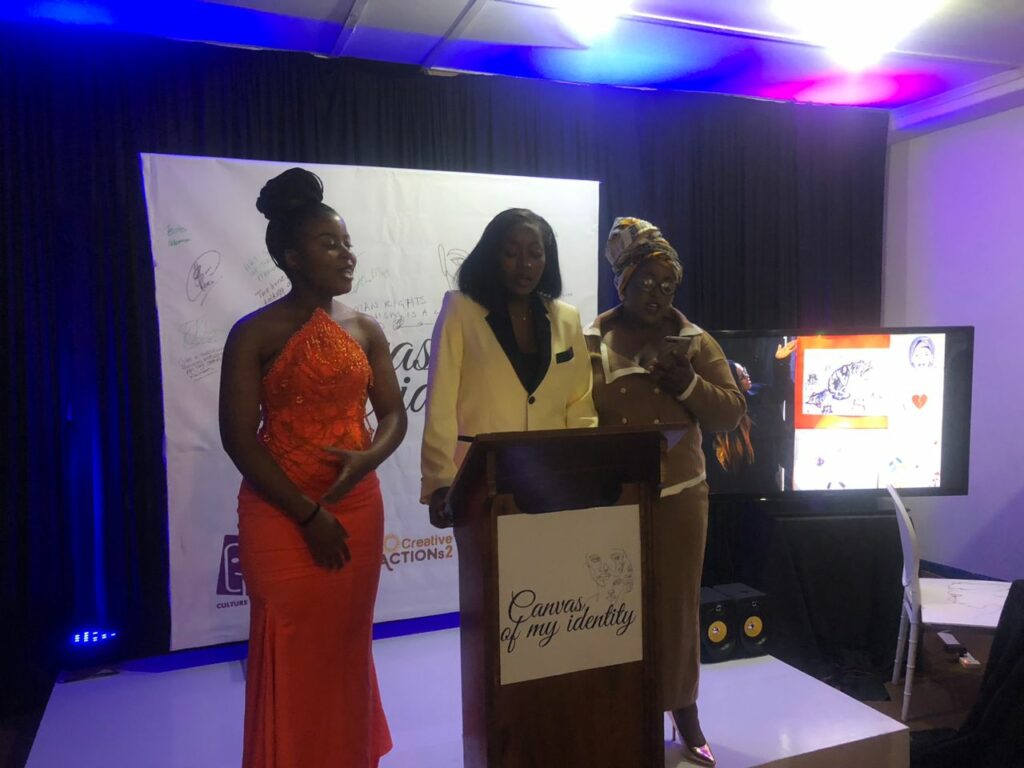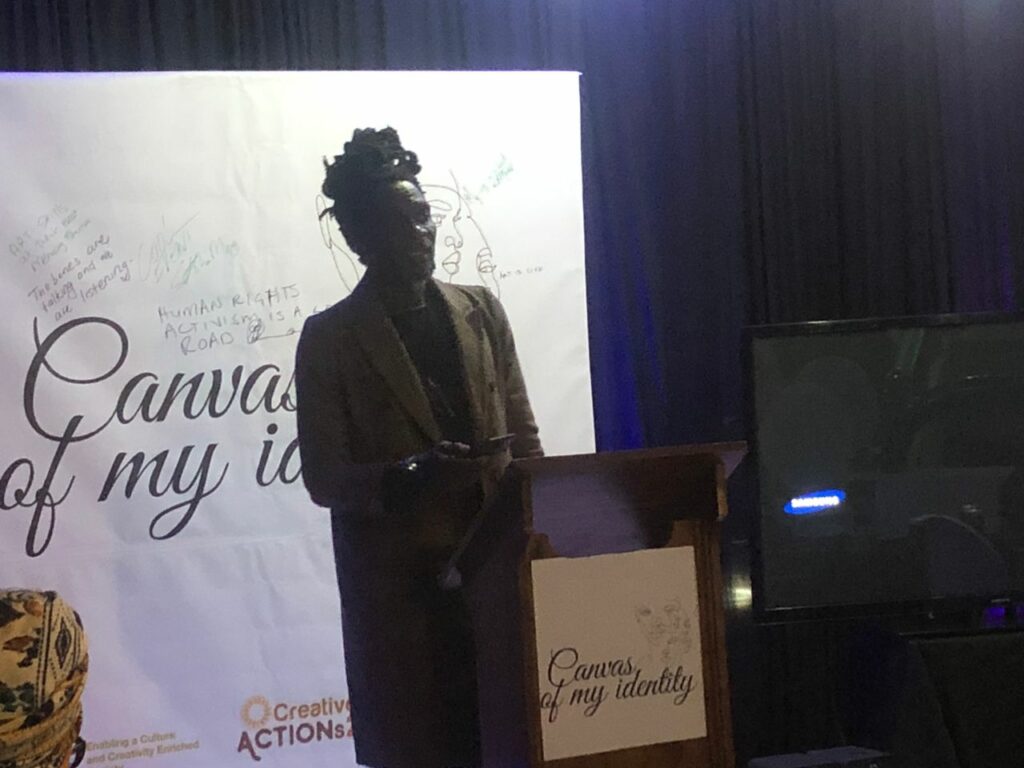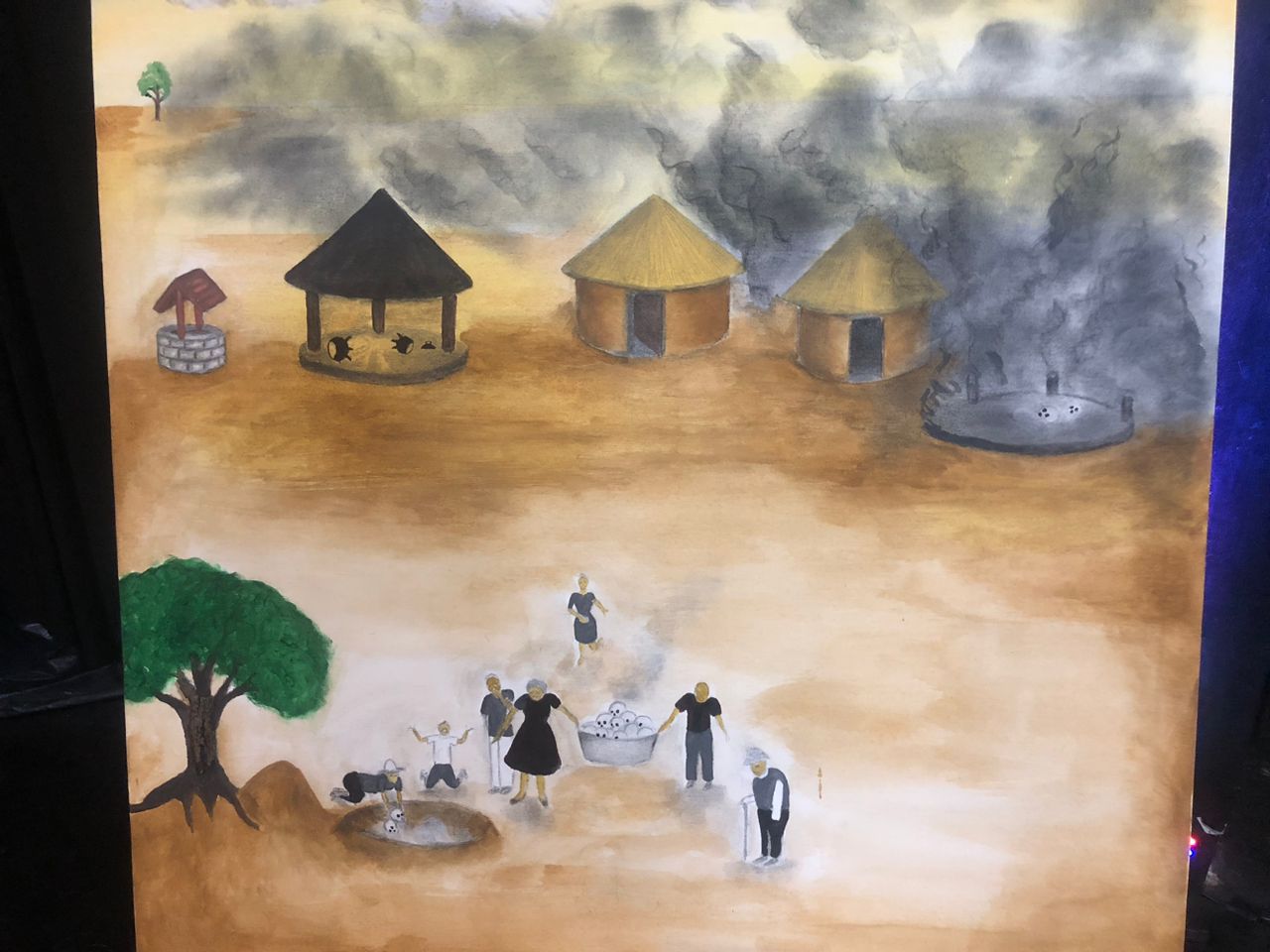By Ndumiso Tshuma
A group of ten women artists, led by Lisa Sidambe, have joined forces to confront sensitive topics like conflict, justice, and trauma through their groundbreaking exhibition “Omapenda: The Female Voice.”
The exhibition, centred around the theme “Canvas of My Identity,” aimed to amplify the often-silenced experiences of women.
Funded by the Culture Fund Trust and supported by the European Union Delegation to Zimbabwe, the exhibition was held at the Zimbabwe International Trade Fair (ZITF) in Bulawayo on Saturday.

It showcased a variety of artworks that explored visual art and justice.
These artworks served as a powerful testament to the bravery of the women who shared their stories and experiences, and the transformative power of art to capture and express emotions.
Speaking at the exhibition, Sidambe revealed that the project was inspired by her experiences as a student in Northern Ireland and Rwanda, where she witnessed the significance of cultural and artistic expressions in sharing complex and challenging histories.
“I saw how art can be used to tell stories that are difficult to speak about openly,” she said. “I wanted to bring this idea back to Zimbabwe and work with women affected by conflict and trauma.”
Sidambe elaborated on the pervasiveness of silence surrounding difficult subjects like conflict. “People don’t want to speak out, people don’t want to speak openly and there’s a harsh silence,” she said.
She described how she assembled a group of ten women who entrusted her with their artistic talents to challenge this silence.
“If there’s anything that I would want you to take away from ‘Canvas of My Identity’ is that it might not be only the imagery that you see, it is also that when we went out into the field, people shared very uncomfortable truths that had happened to them before,” Sidambe said.
She highlighted the bravery it took for the women to speak openly about rape, particularly challenging the notion of keeping such experiences “between ourselves.”
“What struck me is that when women speak out about rape, they always speak about it between themselves and that it’s a case of ‘between ourselves,'” Sidambe said. “What I saw was bravery, women talking about their pain with regards to rape, with the males seated around.”
She added that the boundary of “between ourselves” was further shattered when the victims spoke about children born out of conflict, children who have no idea who their fathers are.
“On children who don’t know their fathers, the victims still spoke about it publicly, so that was our first encounter of people breaking the boundary ‘between ourselves,'” Sidambe said. “Canvas of Our Identity is pushing back against the idea of ‘between ourselves,’ and I hope we have done a great job as a project to make people’s pain visible and to say these issues are not between ourselves, they deserve a voice and an audience.”
Abigal Hunda, the spokesperson for the ten artists, spoke about the collaborative creative process behind the artworks.
“The moments in the program have been heavy and gloomy,” she said. “But through it all, we’ve still felt a sense of responsibility. The human experience is full of turbulence, hard moments, pain, and permanent scars. If this exhibition changes your worldview, then we have something to celebrate.”
Hunda described how the artworks were created through workshops and open conversations, where participants shared their experiences and thoughts on conflict and justice.
“Our artwork speaks of conflict justice through workshops and peer-to-peer dialogue into the meaning of conflict and justice, and sometimes questioning and redefining what they mean,” Hunda said.
She acknowledged the emotional intensity of the project but emphasized their unwavering commitment. “We have represented a voice to remind people of the necessity of acknowledging the existence of all parts of our history,” Hunda said. “Our role as artists is to let our art speak for themselves and on our behalf, so please listen to what the artwork has to say, allow yourself to have an authentic dialogue with the stories on display.”

Owen Maseko, the keynote speaker, said it is important to break the silence on sensitive issues.
“It’s very brave of you to talk about these sensitive issues,” he said.
Maseko shared his own experiences growing up in a time when such topics were taboo.
“Some of us experienced that, some of us saw that happening with our parents and you went out there, listened to those stories and produced artworks, and that’s bravery on its own, so art can capture all those experiences. Some of those paintings are quite touching, some of them are quite scary and they are very emotional. Some of those paintings remind me of certain activities that I witnessed. One of the stories that I witnessed when I was young was my neighbour at Entumbane who used to grow chillies in his garden and sell them, but when the army came they asked him to prune all those chillies and as kids we watched him eat all the chillies, by then I was six or seven years of age. I also saw my mom and father being tortured, so you can see today as we come to this exhibition how powerful art can be and how creative it is,” said Maseko.

